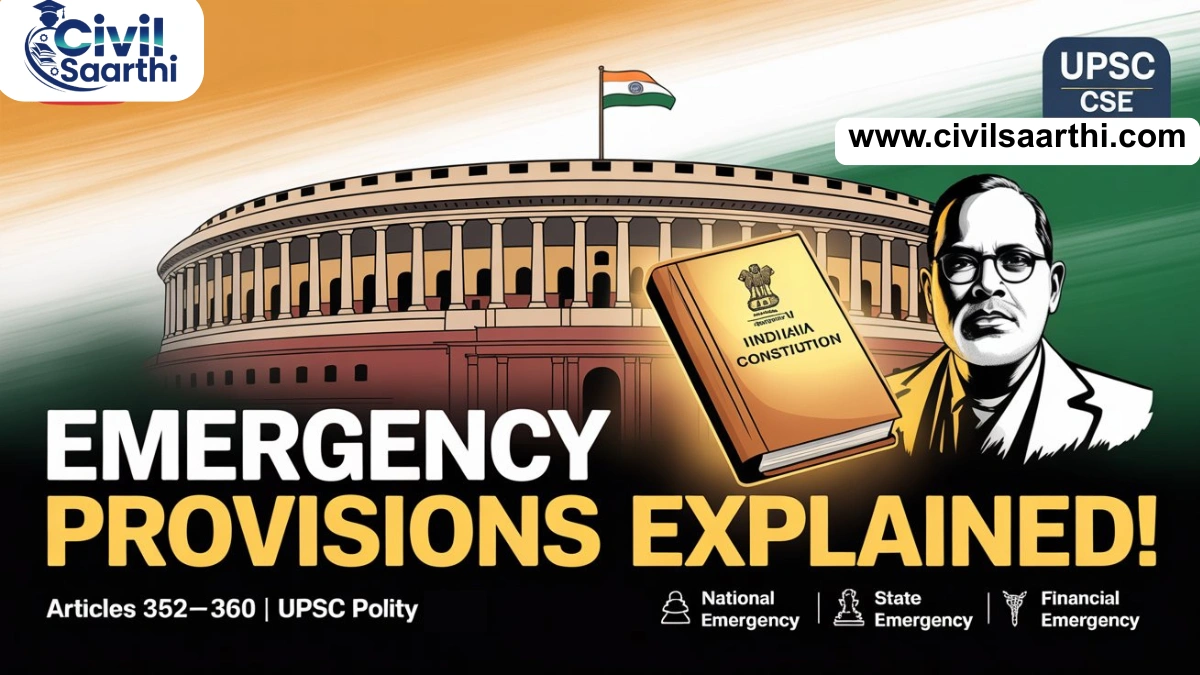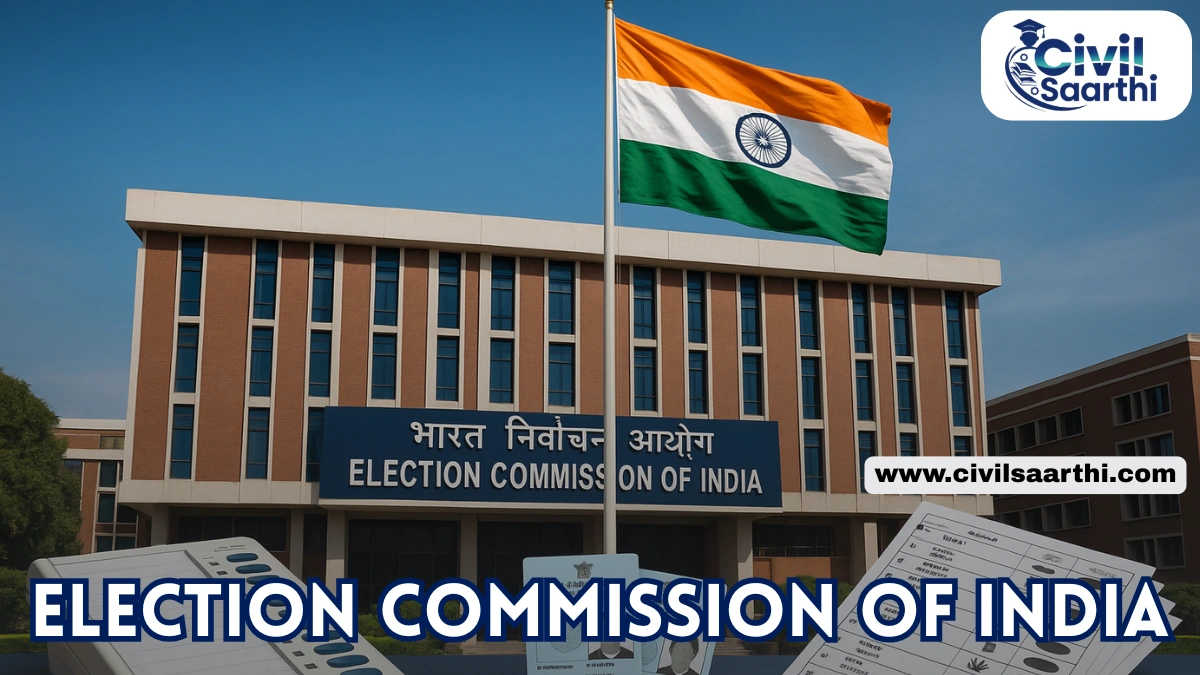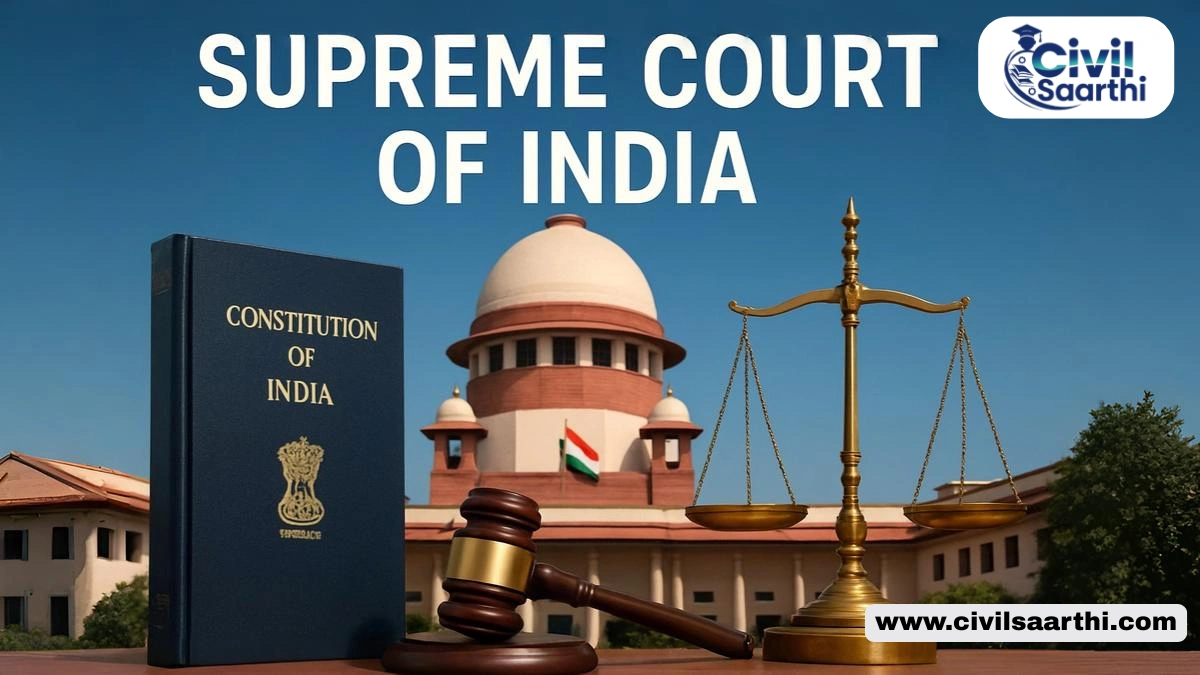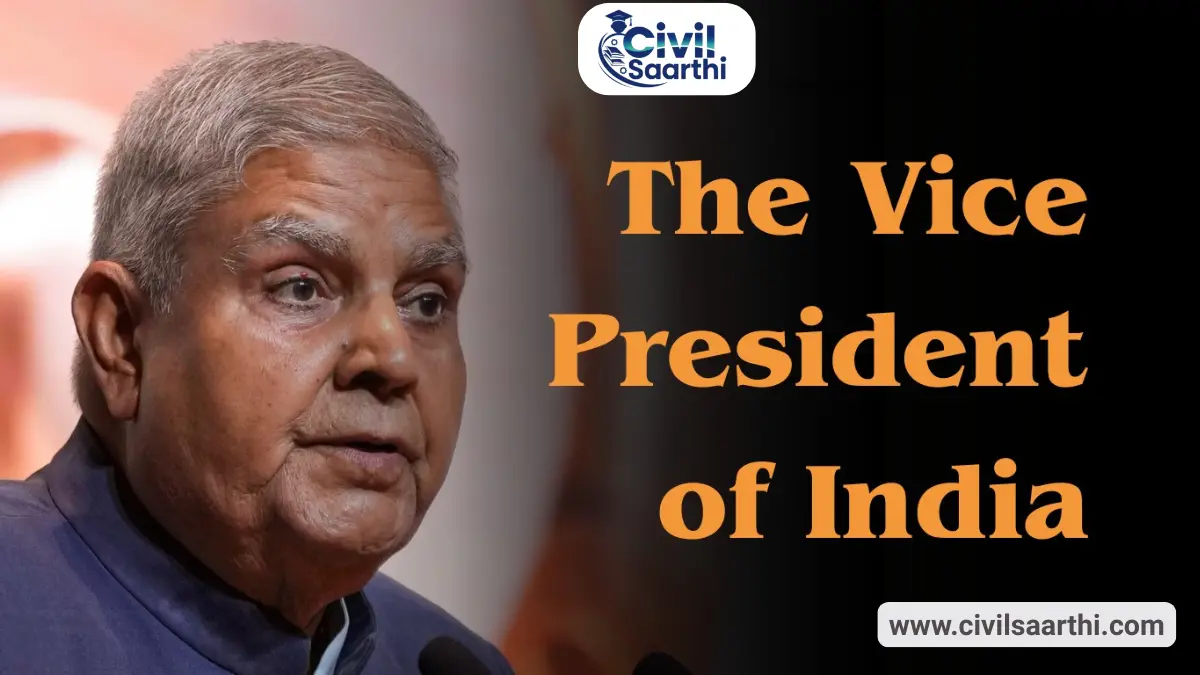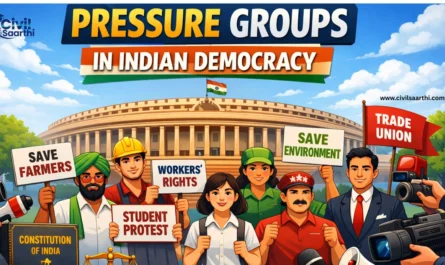The Emergency Provisions in the Indian Constitution are a set of special powers provided to the Union government to tackle extraordinary situations that threaten national security, governance, or financial stability. These provisions allow temporary centralization of authority, modification of the normal federal structure, and suspension of certain Fundamental Rights, while ensuring that the Constitution and democratic governance are maintained. Their design ensures that India can respond effectively to internal and external crises without compromising sovereignty, unity, and law and order.
Definition and Purpose of Emergency
An emergency is declared when a situation arises that cannot be effectively handled by existing administrative or legal mechanisms. This could involve threats to national security, constitutional governance, or financial stability. The Constitution provides a legal framework to manage such extraordinary circumstances, empowering the Union government while also embedding safeguards to prevent misuse. The objectives include:
- Protection of the Constitution and democratic institutions.
- Preservation of national sovereignty, unity, and integrity.
- Maintenance of public order and internal stability.
- Ensuring smooth governance and financial discipline in times of crisis.
Constitutional Basis: Part XVIII, Articles 352–360. Part XVIII, Articles 352–360.
Constitutional Provisions Related to Emergencies
The Constitution meticulously details the scope, procedures, and effects of each type of emergency through specific articles. The following table summarizes these provisions: Types of Emergencies
| Article | Provision |
|---|---|
| 352 | Proclamation of National Emergency |
| 353 | Effect of National Emergency on executive powers |
| 354 | Application of revenue distribution provisions during National Emergency |
| 355 | Duty of Union to protect states from external aggression or internal disturbances |
| 356 | Provisions for failure of constitutional machinery in states (President’s Rule) |
| 357 | Exercise of legislative powers under a proclamation issued under Article 356 |
| 358 | Suspension of Article 19 rights during National Emergency |
| 359 | Suspension of enforcement of Fundamental Rights during National Emergency |
| 360 | Provisions related to Financial Emergency |
Types of Emergencies in Indian Constitution
1. National Emergency
A National Emergency arises when India’s security, or any part of it, is threatened by war, external aggression, or armed rebellion. This is the most extensive form of emergency, temporarily converting India’s federal system into a unitary structure to allow swift and centralized decision-making.
Constitutional Processes
Grounds:
External Emergency: Threat due to war or aggression from another country.
Internal Emergency: Threat due to armed rebellion within the country (44th Amendment replaced “internal disturbance” with armed rebellion).
- Declaration: Made by the President on the written advice of the Union Cabinet, even before the actual threat materializes.
- Parliamentary Approval: Must occur within one month, or within 30 days of the first sitting if the Lok Sabha is not in session.
- Duration: Initially six months, extendable every six months indefinitely with Parliamentary approval by special majority.
- Revocation: The President may revoke anytime, or Lok Sabha may revoke through a simple majority resolution.
Impacts
Centre-State Relations:
Executive: Centre can direct states on executive functions.
Legislative: Parliament may legislate on State List items.
Financial: President may restrict or withhold state funding.
Legislature:
Lok Sabha: Term may be extended up to one year at a time, valid up to six months after emergency ends.
State Assemblies: Terms may also be extended similarly by Parliament.
Fundamental Rights:
Article 19: Suspended automatically under Article 358.
Other rights: Enforcement may be suspended under Article 359; the rights themselves remain intact.
2. State Emergency / President’s Rule
President’s Rule (State Emergency) is imposed when a state government fails to function according to constitutional provisions, ensuring that governance in the state aligns with national laws and democratic norms.
Constitutional Processes
Grounds:
Article 356: If the President believes that a state government cannot carry out constitutional functions.
Article 365: If a state refuses to follow Union directives or violates constitutional provisions.
- Parliamentary Approval: Proclamation must be approved by both Houses within two months through simple majority.
- Duration: Initially six months; can be extended up to three years with periodic parliamentary approval.
Consequences
- Governor: Administers the state on behalf of the President, assisted by Chief Secretary and appointed advisors.
- Legislature: Parliament may exercise state legislative powers.
- Judicial Oversight: Courts can review misuse (SR Bommai Case, 1994).
3. Financial Emergency
Declared under Article 360, a Financial Emergency is imposed when India’s financial stability or credit is threatened, giving the Union government extraordinary control over state finances.
Constitutional Processes
- Approval: Must be approved by Parliament within two months by simple majority.
- Duration: Indefinite until revoked; no repeated parliamentary approval required.
- Revocation: President may end it by issuing a proclamation; parliamentary approval is not needed.
Effects
- Expands Union executive powers over state finances.
- Salaries and allowances of state employees, including Supreme Court and High Court judges, may be reduced.
- Money bills and other financial bills may require President’s assent.
- Ensures centralized financial discipline during crises.
Constitutional Amendments Related to Emergency
| Amendment | Year | Key Changes |
|---|---|---|
| 38th | 1975 | President’s decision made final and beyond judicial review |
| 42nd | 1976 | Expanded emergency scope; Parliament can legislate on State List; widened suspension of rights |
| 44th | 1978 | Replaced “internal disturbance” with armed rebellion; restored Article 19; restricted misuse of Article 356 |
| 52nd | 1985 | Clarified conditions for extending President’s Rule beyond one year |
| 73rd & 74th | 1992 | Strengthened local governance (Panchayati Raj), indirectly reducing centralization misuse |
Landmark Judicial Decisions on Emergency
ADM Jabalpur v. Shivkant Shukla (1976): Validated suspension of rights during emergency; later criticized for undermining civil liberties.
Minerva Mills v. Union of India (1980): Asserted basic structure doctrine, restricting arbitrary emergency powers.
SR Bommai v. Union of India (1994): Judicial review of President’s Rule; misuse curtailed; assembly dismissal challengeable in court.
Effects on Federalism and Governance
- Temporarily shifts India from a federal to unitary system.
- Parliament gains authority over State List subjects.
- Fundamental Rights, especially Article 19, are curtailed; Articles 20 and 21 remain protected.
- Centralized executive and financial powers.
- Judicial review ensures limited but critical oversight to prevent misuse.
Conclusion
Emergency provisions are essential to maintain national security, governance, and unity, while allowing temporary centralization of power. They balance flexibility in crisis management with constitutional safeguards, including parliamentary oversight, judicial review, and time-bound approvals. UPSC aspirants should focus on the Articles, amendments, landmark cases, and effects on federalism and fundamental rights to master this topic for Prelims and Mains.
UPSC Prelims Practice Questions on Emergency
Q1. Consider the following statements regarding National Emergency under Article 352:
The term “internal disturbance” is used in the original Constitution to describe internal threats.
The 44th Amendment replaced it with “armed rebellion.”
A proclamation of National Emergency must be approved by both Houses within one month by a simple majority.
Which of the statements given above is/are correct?
(a) 1 and 2 only
(b) 2 and 3 only
(c) 1 and 3 only
(d) 1, 2 and 3
✅ Answer: (a)
🧩 Explanation: Approval requires special majority, not simple.
Q2. During the operation of a National Emergency:
The federal structure becomes unitary.
Parliament can legislate on State List matters.
Distribution of financial resources may be altered by Presidential order.
Select the correct answer:
(a) 1 only
(b) 1 and 2 only
(c) 1, 2 and 3
(d) 2 and 3 only
✅ Answer: (c)
Q3. Which of the following statements is/are true regarding Financial Emergency under Article 360?
It must be approved by Parliament within two months by special majority.
Once approved, it continues indefinitely until revoked.
Salaries of Supreme Court judges can be reduced during its operation.
(a) 1 only
(b) 2 and 3 only
(c) 1 and 3 only
(d) 1, 2 and 3
✅ Answer: (b)
🧩 Explanation: Approval is by simple majority, not special.
Q4. Which of the following provisions is/are unaffected even during a National Emergency?
Article 14
Article 20
Article 21
Article 22
(a) 2 and 3 only
(b) 1, 2 and 3
(c) 1 and 4 only
(d) 2, 3 and 4
✅ Answer: (a)
🧩 Explanation: Articles 20 and 21 cannot be suspended post-44th Amendment.
Q5. During President’s Rule under Article 356:
Parliament can delegate legislative powers to the President.
The state legislature is automatically dissolved.
The President acts through the Governor.
(a) 1 only
(b) 1 and 3 only
(c) 1 and 2 only
(d) 2 and 3 only
✅ Answer: (b)
🧩 Explanation: State legislature may be suspended or dissolved, not automatically.
Q6. The 44th Constitutional Amendment (1978) introduced which of the following safeguards?
President must act on written advice of the Cabinet.
Emergency must be approved by special majority.
Fundamental Rights under Article 19 cannot be suspended during Financial Emergency.
(a) 1 and 2 only
(b) 1 and 3 only
(c) 2 and 3 only
(d) 1, 2 and 3
✅ Answer: (b)
🧩 Explanation: Special majority applies to National Emergency only.
Q7. The Supreme Court’s decision in Minerva Mills vs. Union of India (1980) reaffirmed that:
(a) Judicial review is part of the basic structure
(b) Parliament has unlimited power to amend the Constitution
(c) President’s satisfaction is final in an Emergency
(d) Fundamental Rights can be suspended indefinitely
✅ Answer: (a)
Q8. Which of the following pairs is correctly matched?
| Amendment | Feature Introduced |
|---|---|
| 38th Amendment | Restored Article 19 during Emergency |
| 42nd Amendment | Empowered Centre during Emergency |
| 44th Amendment | Prevented misuse of Emergency powers |
(a) 1 and 2 only
(b) 2 and 3 only
(c) 1 and 3 only
(d) All of the above
✅ Answer: (b)
Q9. Which of the following statements is/are true regarding suspension of Fundamental Rights?
Article 19 rights are automatically suspended during National Emergency.
Suspension under Article 359 can include Articles 20 and 21.
Article 359 affects only enforcement, not existence, of rights.
(a) 1 and 2 only
(b) 1 and 3 only
(c) 2 and 3 only
(d) 1, 2 and 3
✅ Answer: (b)
Q10. The power of the President under Article 356 is subject to judicial review because:
(a) It violates federalism
(b) The Constitution provides for limited powers
(c) Of the Basic Structure doctrine
(d) It affects the independence of the legislature
✅ Answer: (c)
🧩 Explanation: In SR Bommai (1994), the Supreme Court held that misuse of Article 356 violates the basic structure of the Constitution.
Emergency Provisions in the Indian Constitution FAQs
Q1. How many types of emergencies are provided in the Indian Constitution?
There are three types of emergencies — National, State, and Financial Emergency.
Q2. Under which Article can National Emergency be proclaimed?
National Emergency can be proclaimed under Article 352.
Q3. What are the grounds for proclaiming a National Emergency?
The grounds are war, external aggression, or armed rebellion.
Q4. What is the maximum duration of National Emergency?
It can continue indefinitely with parliamentary approval every six months.
Q5. Which amendment replaced “internal disturbance” with “armed rebellion”?
The 44th Constitutional Amendment Act, 1978 replaced the term.

